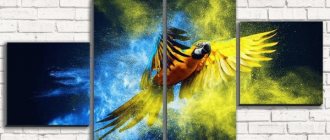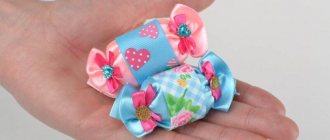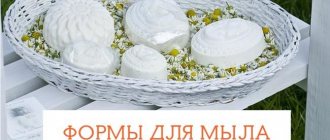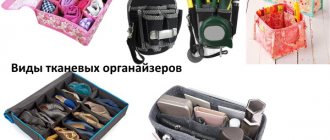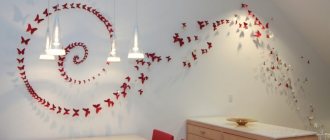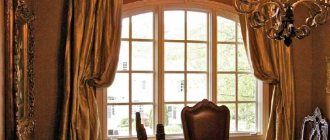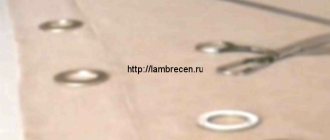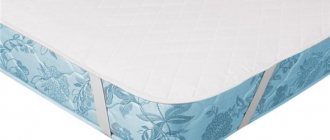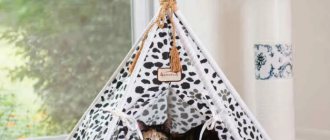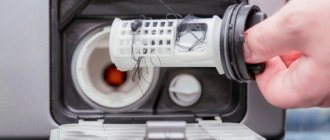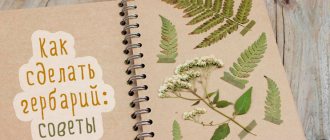To decorate curtains, you can use tiebacks, pins, ribbons and other accessories. Pins are used to assemble the fabric of drapes, curtains and curtains; they allow you to create beautiful and neat folds. Clips can also be used as an attractive decorative element. You can buy ready-made accessories, but it’s much more pleasant to make them yourself, using a variety of ribbons, beads, buttons and other products to match the color of curtains, wallpaper, and upholstery.
All pins and ribbons must be placed on the curtain neatly and symmetrically to maximize the visual effect.
You can use different objects to make hairpins; even used disks are suitable as a base. The simplest option is a ribbon with or without a buckle. Often the tape is attached to the wall to raise the fabric a little, but you can limit it to just the girth of the curtain.
Hairpins for children's rooms are very diverse; even children can be trusted to make them, which they will be only too happy about.
What are curtain clips
Clothes pins for curtains are special fasteners that perform not only a decorative function, they have practical significance. As a decorative element, they bring uniqueness and unusualness to the interior, adding a touch of novelty even to old curtains.
Such elements add personality to the room, creating a beautiful, harmonious composition.
Using clips, you can change the length and width of curtains, give them the desired shape, and fix them in a certain position. They are made from various materials and can serve as both hangers for curtains and fastenings to the cornice. The choice of fittings depends on the characteristics of the curtains, the type of fabric and the style of the room.
The variety of holders will allow you to choose the best option for any interior.
Additional Information! Using curtain clips, you can adjust the lighting in the room and hide some of the imperfections of the window: visually enlarge a small opening, straighten out an asymmetrical arrangement, hide minor defects.
How to make a pattern for a fabric pick-up?
To be able to make a curtain clamp yourself, you will need to first prepare a pattern. This work is not difficult, but it should be done carefully and carefully. The pattern is made in the following order:
- First of all, a piece of fabric of the required length is cut, and the width of the piece should be 25 cm. The fabric element is folded in half in length.
- Next, you need to measure the final width from the bend with a ruler. In this case, the point can be marked with a small piece of soap. Then you need to measure half of the length for the pickup.
- A distance of 2.5 cm less than the width is marked from the edge. 27.5 cm are deposited from the bottom (width plus 2.5 cm). The prepared pattern should be cut from a piece of fabric and then unfolded. For the lining you need to use oilcloth or any dense fabric that can be cut according to an existing pattern.
Features and varieties
You need to select fastenings for curtains taking into account the style and purpose of the room. In the living room you can use a variety of hairpins and brooches, the curtain in the children's room will be decorated with clothespins in the shape of funny animals or fairy tale characters, and tulle in the kitchen will refresh the decor in the form of fruits and vegetables.
The nursery is decorated with soft toys, the legs of which have Velcro, magnets, and ribbon ties attached.
The most popular types of clamps are:
- Metal ones are quite versatile and practical, they will fit perfectly into any style, and the variety of designs allows you to realize any creative ideas. Such fastenings have disadvantages - over time they can corrode and leave marks on the fabric.
They are reliable, easy to use and will last for many, many years.
- Magnetic clips and clothespins are made of metal, wood and plastic. They consist of a flexible base and decorative magnets on both ends to ensure a secure fit.
Magnetic clips are more suitable for connecting curtains and curtains in the center.
- Decorative elements are the most original fixatives. They are practical and affordable, you can make them yourself, thereby adding zest to the interior of the room. The most popular are hairpins, brooches, cords, twine and ribbons.
Curtains with tiebacks made using the knot weaving technique of macrame look very original and homey.
Note! Tiebacks have different methods of fastening. In most cases, these are independent elements into which the curtain is tucked. Often, fixation requires stationary decorative hooks, which are mounted on the wall next to the window.
How to make curtain clips with your own hands
Despite the chic selection of fasteners, you can independently implement the most non-standard ideas for curtain design, taking into account the subtleties of style and your own taste. It is not difficult to make such products; you just need to show a little imagination and perseverance, then unusual and unique decorations will decorate the room.
They can easily hold even the heaviest drapery and fit perfectly into Provence, rustic, and modern interiors.
We offer several ways to make original curtain clips with your own hands.
- Oriental-style hairpins, called kanzashi, are suitable for decorating curtains in the living room. They are made using old CDs, sushi sticks and satin ribbons. To do this, widen the hole in the disk, then wrap the edges with tape. The hairpin can be decorated with fabric flowers, beads or rhinestones.
Tiebacks using the “Hana kanzashi” technique are unique hairpins decorated with silk flowers created by folding squares of different sizes.
- Toy holders are popular for children's rooms. Cute cats or bears are attached to the assembled curtain with buttons or ribbons, resulting in the impression that the animal is wrapping its paws around the curtain.
Knitted products - made using a hook, knitting needles, bobbins, decorated with buttons, beads, pom-poms.
- For curtains in the kitchen, veranda or dining room, you can use cups, small jugs or other utensils. The bottom of the dish is removed, after which the fabric is threaded through the hole formed. Fix the product with a hook on the wall. An even simpler way is to bend a fork or spoon, and the unusual clamp is ready.
Cup tiebacks: unexpected and practical. It is important that the cup is not cracked - it will not hold heavy fabric.
Important! The finished product should not have defects, roughness or sharp edges that could cause injury during use or damage the fabric.
Master class on making hairpins from used discs
To make the curtain look beautiful, you can use a clip. To make it, you need to prepare the following materials:
- CD disk (you can take any unnecessary one);
- wide ribbons to match the color of the curtain;
- several flowers made from fabric. You can easily buy them at any sewing store or simply make them yourself;
- scissors, thread, needles.
Pins are usually used to assemble the fabric of drapes and curtains; they allow you to create beautiful and neat folds.
The clamp making process is very simple:
- First, you need to cut out the core from the disk to get a circle with a width of 3 cm.
- The disk is decorated using tape, which is carefully wrapped around the perimeter of the workpiece.
- The edges of the tape are sewn together so that the seam is not visible, after which a rosette is made from the second tape. To do this, the tape is folded in half and twisted in the shape of a snail.
- You need to sew a rose and several purchased flowers to the ring, carefully hiding all the seams.
- You can use any thin object to clamp the fabric. If there is an unnecessary knitting needle, then it can be cut into 2 parts, each one must be decorated with a ribbon.
This simple but very attractive design is used for thin curtains; a thick curtain cannot be held with a similar clip.
Unusual clips and pins for curtains
There are no limits to the implementation of any idea; now the trend is the most non-standard and original curtain clips. The only condition is to maintain consistency with the style, and the rest depends on the flight of fancy.
Similar products are used in the living room, bedroom, kitchen, nursery, loggia, and glazed balcony.
- A tie is the easiest and fastest way to turn an outdated wardrobe item into a stylish tie. You can also use belts, suspenders, or make tiebacks from old fur items.
Curtains with tiebacks: the original tie version.
- Bijouterie. Elements made of beads, bracelets or necklaces inlaid with stones and rhinestones look incredibly elegant and sophisticated. You can make this decor yourself by stringing beads or glass beads onto fishing line or elastic.
It is permissible to use both ready-made pieces of jewelry on a strong thread and homemade ones.
- Door knob. It can be attached to the wall, thus creating an unusual stationary holder.
An unusual door handle will compete with other types.
Creating unique compositions is simple and fun. Don’t be afraid to experiment; this is a great opportunity to show your creativity and bring a little warmth and comfort into the interior.
With the right selection of clips, tiebacks and decorative pins for curtains, drapes and curtains, you will not only update the interior of your home, but also realize your creative abilities.
